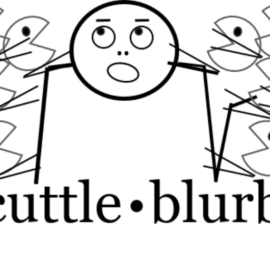Long Tail Risk and the Sins of the Past
Based on my experience covering insurers, when a carrier takes a reserve hit on a long tail liability (like, say, worker’s comp or asbestos), there is almost always another shoe to drop.

Capital Thinking • Issue #740 • View online
“I have always been attracted to the low cost operator in any business and, when you can find a combination of (i) an extremely large business, (ii) a more or less homogenous product, and (iii) a very large gap in operating costs between the low cost operator and all of the other companies in the industry, you have a really attractive investment situation.
That situation prevailed twenty five years ago when I first became interested in the company, and it still prevails.”
- Warren Buffett (in a letter to one of GEICO’s officers, dated July 22, 1976)
[ADM.L – Admiral Group] Barriers to scale; moats vs. revenue models
Two distinguishing features of auto insurance are that it is:
1/ short-tail, meaning that a claim is known soon after the accident occurs…unlike, say, asbestos, the liability doesn’t lurk hidden on the balance sheet for decades before manifesting[1]; and
2/ granular, meaning each loss event is relatively small and the law of large numbers is more applicable compared to something like coastal commercial property. An auto carrier with national scale is unlikely to have its balance sheet torpedoed by a handful of loss events.
Claims severity (auto repair costs, bodily injury inflation, and legal costs), while inflating at 7%-9%/year as more sophisticated technology gives rise to greater “bent metal” claims cost[2], is nevertheless predictable and range-bound development and can be synchronized with pricing to maintain profitability.
Over a large population, claims patterns are risky but not really uncertain. But the granular, short-tail nature of the auto risk also results in more uniform policies and transparent pricing, which renders it a price-driven commodity that requires a competitively advantaged cost structure to profitably underwrite.
The most consistently profitable US auto carriers – Progressive (the #3 player with 11% market share by premiums) and GEICO (#2; 13%) – achieve cost supremacy through scale.
At a time when most insurers distributed through independent agents, GEICO heaped premiums atop fixed marketing costs to achieve unassailable cost leadership first among low risk government employees and then among the broader population.
Brand advertising and size also confer benefits online. Due to its high unaided brand awareness – which soared from ~15% in 2000 to nearly 60% by 2011 and is almost certainly higher today – Progressive not only enjoys more direct searches but is almost certainly assigned a higher Quality Score by Google, which means it can underbid less well-known peers for the same keywords.
And relative to smaller underwriters, GEICO and Progressive have more data with which to better segment customers, price risk, and market to consumers.
Having a culture that treats customers well and values technology reinforces scale advantages. All else equal, retention rates matter a great deal more when customer acquisition costs are fixed than when they are variable.
If a customer churns off in year 1 due to poor claims experience, an underwriter who relies on brand marketing and therefore bears the entire acquisition cost upfront will be much worse off than one who pays independent agents a percent of premiums.
Progressive might report, say, a 130% combined ratio in year one (combined ratio = losses paid + underwriting expenses + customer acquisition costs divided into net premiums) but still generate underwriting profits over a policyholder’s lifetime, assuming 80%-85% combineds for that policyholder in subsequent years.
Moreover, while I’m sure every auto underwriter insists that assiduous claims management, customer segmentation, and pricing is deeply ingrained in their DNA, the ones who really mean it prioritize technology and data. Progressive is widely reputed to be the most tech-savvy/statistically driven carrier in the industry.
In 1998 the company pioneered usage-based insurance (using driving behavior collected from a telematics device or a smartphone app to inform pricing and segmentation[3]) and claims to have more driving data than any other carrier, data that can be used, for instance, to offer lower prices to responsible drivers.
While most insurers outsourced marketing and considered every dollar of ad spend interchangeable, Progressive treated marketing as a core competency, buying all its ads in-house, negotiating directly with publishers and media networks, designing its own marketing content, and assiduously measuring return on ad spend (for instance, leveraging Big Data for multi-touch attribution in 2012/2013).
With scale and culture giving rise to lower unit costs, Progressive and GEICO can underprice peers, driving more policy volumes, more leverage on marketing spend, and more data with which to intelligently segment customers and price policies, further fueling better underwriting outcomes.
The barriers to scale are formidable.
Saying that competitor would need to spend gargantuan sums on marketing over decades to rival GEICO’s and Progressive’s market share doesn’t quite capture the difficulty because without legacy brand and underwriting advantages, its marketing dollars would be less efficiently spent.
Thus, while the US personal auto insurance industry has lost money on underwriting most years since at least 1970 (though it has made up the difference on float income)…

As I wrote in my Protector Forsikring post: “The problem with long-tail business is that the sins of the past are always lurking in the background. The reserve deterioration you see today could tie back to risk underwritten 5-10+ years ago.
Based on my experience covering insurers, when a carrier takes a reserve hit on a long tail liability (like, say, worker’s comp or asbestos), there is almost always another shoe to drop.
Loss events related to short tail lines, on the other hand, resolve themselves quickly.
When a hurricane rips your house apart, trust me, you will know and you won’t wait 5 years to report the event to your underwriter”.
